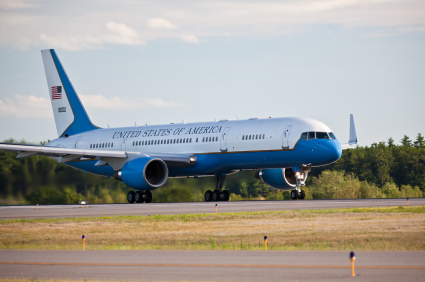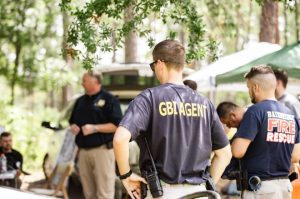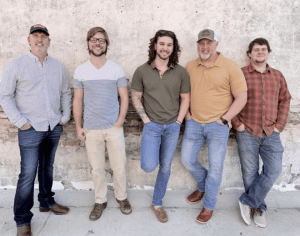Covering Obama: Is this trip worth it?
Published 7:30 pm Tuesday, February 26, 2013

- In this photo from July 2011, Air Force One taxies on to the runway for take off from Manchester Boston Regional Airport, in Manchester, N.H.
No one ever said covering the most powerful man in the world would be cheap. But given how the White House has treated the traveling press lately, some journalists are wondering whether covering President Barack Obama on the road is worth the enormous investment.
Trending
News organizations whose reporters hitched a ride on Air Force One to cover President Obama’s trip to Florida over the Presidents’ Day weekend will pay about $3,500 for the three-day journey once all the bills — air and ground transportation, hotels and food — are counted up.
The money didn’t buy much, however. The White House Correspondents’ Association lodged a formal protest with White House officials last week after reporters were barred from seeing any part of Obama’s activities, including a round of golf with Tiger Woods. Obama spoke with reporters on the trip home, but only on an off-the-record basis, meaning none of what he said could be reported.
With media outlets under increasing financial pressure, some question whether routine presidential trips provide much bang for the buck — or rather, millions of bucks, which is what it costs some news outlets to keep up with Obama throughout the year.
The steep cost of following the president here and there has led many news organizations to cut back their travel. Among those that have dropped regular reporting trips: Time magazine, whose former White House correspondent, Jay Carney, now serves as Obama’s press secretary.
Some reporters suggest that traveling with the president has a limited upside, anyway. For one thing, many reporters don’t get much more than a glimpse of the president during his trips. They have to rely on the same “pool” reports that journalists back home receive at the same time that they do. (Pool reports are dispatches to the press corps from reporters designated to attend events that can accommodate only a limited number.) Under strictly observed rules, only the wire services can break news ahead of the distribution of the pool report to everyone else. The wire services enjoy this privilege because they cover the president on every trip.
Even if something happened to Obama, “we wouldn’t be able to report it for our own [outlets] until the pool report is sent out by the White House to the [full] White House press corps,” grumbled one White House reporter, who asked not to be named because he was not authorized to speak on his employer’s behalf.
Trending
— — —
The president’s Florida sojourn was relatively inexpensive, as such trips go. The White House Office, which arranges reporters’ travel, said last week that a charter flight to Newport News, Va., for a presidential speech on Tuesday would cost reporters between $1,300 and $4,300, depending on which carrier was selected and how many reporters signed up. Reporters voted for a second option for the 340-mile round trip — a chartered bus, costing about $60 per person.
A three-day trip in October by the president to California (for fundraising) and to Ohio (for a campaign speech) cost media organizations $33,022.86 for each person they sent, according to The Washington Post’s billing records.
A presidential visit to Thailand, Burma and Cambodia in November may have been the most expensive yet. With multiple legs, lodging and food, news organizations wound up paying nearly $35,000 per head, according to The Post’s records. Some reporters saved about half the cost of the trip by taking commercial flights to Thailand, boarding the official press plane only while traveling within Asia.
Only a handful of news organizations — typically, the major wire services, the TV networks and the New York Times and The Post — regularly send a reporter along with the president now. Others take what some wags call the Expedia Option (after the travel-booking Web site), picking their trips based on cost and perceived news value.
But knowing which might produce the most news is pure guesswork. “We just don’t have a theory,” says Ben Smith, editor of Buzzfeed, a Web site that assigned reporters to travel with the president during the campaign. “We are still figuring out which ones are worth it.”
The Wall Street Journal’s Washington bureau chief, Gerald Seib, said his paper decided not to send a reporter to cover Obama’s golf vacation. “If a trip is designed to be non-newsworthy, with no prospect of access, we’ll take a pass, ” he said. But “when the president is doing the president’s business, our inclination is to be there.” Added Seib, “You do wonder at times, is this worth it?”
In fact, important news can break out at any time, even during nominal “down” times on the road for the president. In December 2009, while Obama was on vacation in Hawaii, a Nigerian man attempted to blow up a Detroit-bound jetliner with explosives concealed in his underwear. During another presidential vacation in August 2011, the uprising in Libya came to a head.
“All of these trips are important because you don’t know what hasn’t happened yet,” said Cameron Barr, The Post’s national editor. News organizations “have to balance the cost of not being with the president and missing something important.”
Even when news doesn’t happen, reporters can gain valuable insights about the president and his administration by traveling with him and his staff, said David Leonhardt, the New York Times’ Washington bureau chief. “Yes, [these trips] are expensive,” he added. “But we still think they’re worth it.”
By far, the most costly part of presidential press is airfare, particularly the special charter planes that reporters take. The charters are hired by the White House Office based on a competitive bid that is approved by members of the White House Correspondents’ Association. Most of the eye-popping cost of the trip to Asia in November was for passage on Air Force One and the chartered press jet; The Post paid $31,717 for its seats on the two planes during that trip. (The White House Office charges the media the same for either plane).
Why so expensive? Among other reasons, the press charters carry relatively light loads (often 30 or 40 people compared with 150 for a commercial flight), according to a charter-company executive. The private jets also operate on irregular schedules and fly “dead legs” — that is, empty — en route to picking up passengers. In addition, press charters have more elaborate food and beverage offerings than commercial flights and greater security constraints than regularly scheduled planes, said the executive, who asked not to be named because his company is a contender for White House contracts.
Since the cost of the charter flight is split among all of the people on it, news organizations wind up paying more when others decide not to go. In other words, when others deem a trip too expensive, it gets more expensive for everyone else.
— — —
Although the White House Correspondents’ Association didn’t mention the cost of covering the president in its complaint last week after the Florida golf outing, Ed Henry, the group’s president, said the issue has come up in the past. “It costs some of our [news] organizations millions of dollars a year to cover the president,” said Henry, speaking as head of the WHCA, not in his role as Fox News’s White House correspondent. “Would we like to find ways to make it more economical and efficient? Yes, we would.”
During long trips abroad, for example, the correspondents association has asked the White House for more background briefings from Obama’s top advisers and traveling staff members. “We think it’s appropriate, given the huge sacrifice of traveling all around the world . . . to get a little something extra on the road,” he said.
By the end of last week, Henry said the WHCA’s complaint about access may have gotten some attention at the White House. In an unusual move, Obama took a question from the media during an Oval Office visit on Friday by Japanese Prime Minister Shinzo Abe — a small sign of progress, according to Henry.
“The president decided to take a step, not a big step but a step, toward us,” he said. “That’s awesome.”






